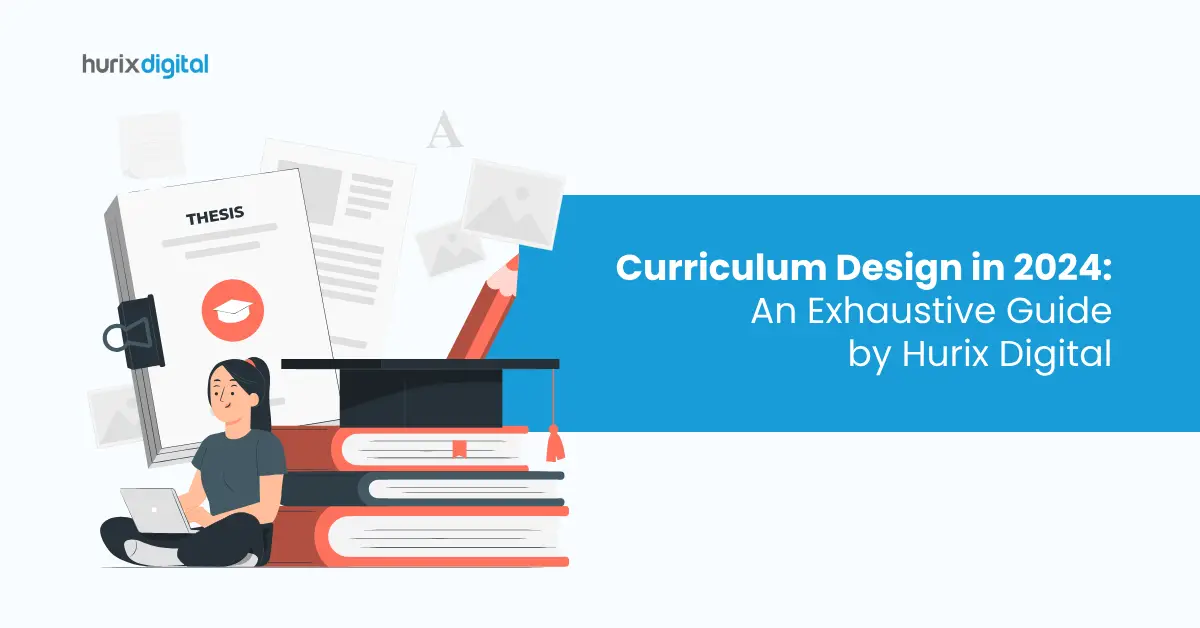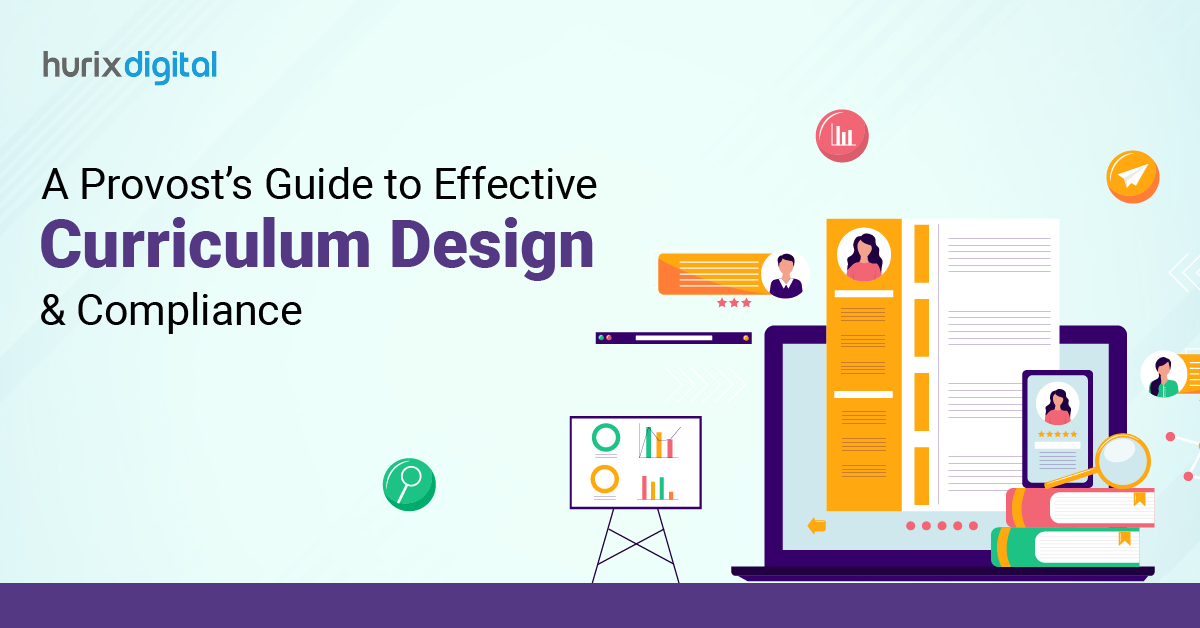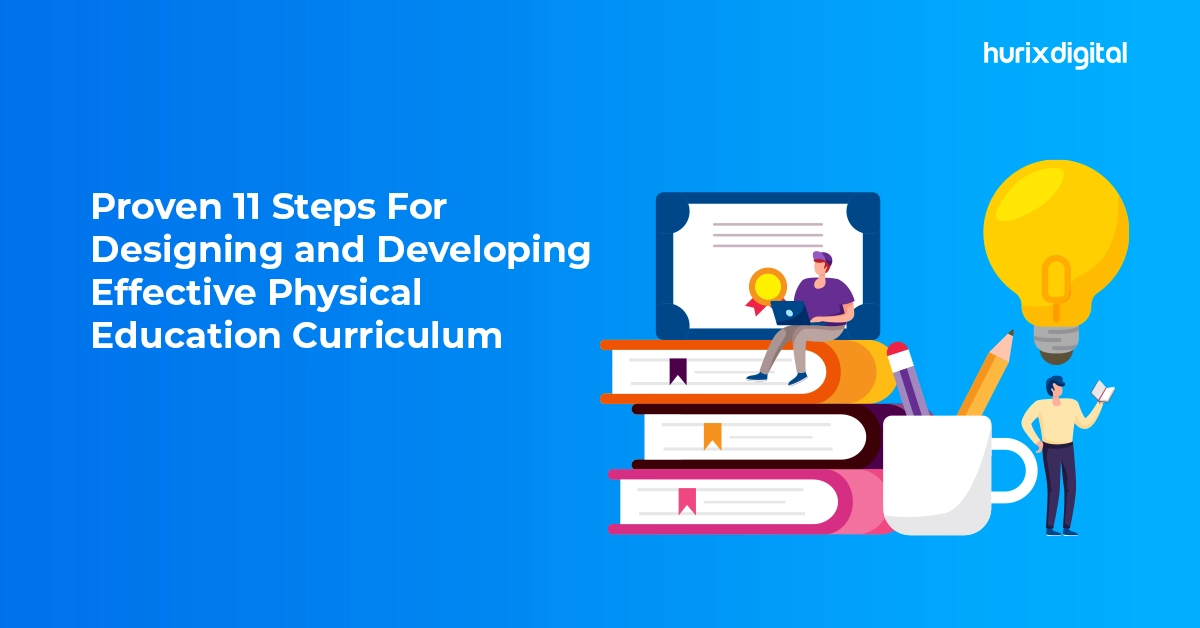
Curriculum Design in 2025: An Exhaustive Guide by Hurix Digital
Do you know that by 2028, the EdTech market will reach around $696.04 billion? Among those segments, K12 and higher education are the strong pillars that will drive these significant changes. But it’s not over yet. With 2025 dawning on us, expect more of these high-end educational tools and technologies.
As a result, you need to be ready with the skills and knowledge that will shape the future of learning. But how to create curricula that satisfy the needs of 21st-century learners? What’s more, how do you align it with the trends of the latest era?
This detailed guide by Hurix Digital will explore vital elements in curriculum design. So far, our powerful solutions have helped many educators and students fulfill their dreams. Now it’s your turn. Let’s begin!
Table of Contents:
- The Power of Curriculum Design: Understanding Its Significance
- Transforming Education: A Guide to Future-Ready Curriculum Design
- Final Thoughts
The Power of Curriculum Design: Understanding Its Significance
Do you ever wonder about the seamless flow of knowledge in a functional learning program? How do institutes create courses that captivate students? Moreover, how do they adapt to their changing needs and foster meaningful growth?
The answer lies in effective curriculum design.
It is the deliberate planning of educational content, activities, and reviews to achieve specific outcomes. It is not a one-time activity but a continuous cycle of reflection and improvement.
Designing a purposeful curriculum is significant because it:
- Considers diverse interests, backgrounds, and societal standards to create a resonating learning experience.
- Shapes the course content, learning objectives, and instructional strategies that seamlessly intertwine.
- Influences the quality and effectiveness of education and enhances learning outcomes.
- Adapts to the student’s evolving needs, ensuring teaching remains relevant and impactful.
Now that you understand the importance of an effective curriculum let’s move on to designing one.
Also Read: Curriculum Design: How To Develop A Successful Curriculum
Transforming Education: A Guide to Future-Ready Curriculum Design
Curriculum design is the skeleton for the future of education. It inspires the learner and prepares him for 21st-century challenges. A properly constructed, engaging, and effective curriculum enables educators to succeed in their learning ventures. The book is very comprehensive in detailing the development, assessment, and implementation of curriculum design.
Educators know these pillars on a deep level to design interesting, challenging, and appropriately contexted learning experiences for their learners. With innovation at the forefront, and with an up-to-date understanding of what’s new in education technology, these educators are empowered to curate curricula that are workable for learners while helping to generate positive results.
As stated earlier, curriculum design shapes course content and influences education quality. It involves three main pillars: development, evaluation, and implementation. By understanding these categories, you can create engaging and interactive curricula.
So, let’s take a closer look at each of them.
1. Curriculum Development: Building the Foundation
Curriculum development lays the foundation for the entire process. In this phase, you can define the learning objectives, select appropriate content, and design instructional strategies. Consider learners’ needs, societal demands, and emerging trends to develop a relevant curriculum.
This step tries to identify the gaps and opportunities for learning and define the scope of your curriculum. Here are some curriculum development best practices:
- Know your learners’ background, prior knowledge, and any specific challenges they may face.
- Gather data through surveys, interviews, or focus groups to understand learners’ skills and attitudes. This will help identify gaps between their current abilities and desired learning outcomes.
Setting clear and measurable learning objectives is an important step to curriculum development. Here’s how you can frame your objectives using the SMART criteria:
- Specific: Form clear objectives that use action verbs to describe observable behaviors.
- Measurable: Design quantifiable goals with measurable criteria for assessing progress and achievement.
- Achievable: Form challenging but realistic and achievable goals that inspire your students.
- Relevant: Create learning objectives according to field standards and the expectations of stakeholders.
- Time-bound: Set clear time frames for your curriculum to be reasonable. Plus, split all your goals into smaller and manageable milestones.
Break down the silos! Interdisciplinary learning prepares students for the complex challenges of the future. Here’s how you can execute this step:
- Logically categorize the content. Use foundational concepts as a starter and gradually build up toward more advanced topics.
- Focus on developing abilities such as critical thinking, communication, and problem-solving skills necessary for success in the 21st century.
- Add interactive and practical elements to create an immersive learning experience. Augment your digital learning curriculum with case studies, group projects, and real-world examples.
2. Curriculum Evaluation: Ensuring Continuous Improvement
The second phase of curriculum design begins with collecting relevant data for the curriculum. The data is then the data studied to identify patterns, trends, and areas for improvement.
Here’s how you can ensure its efficacy and make data-driven decisions:
Since such an undertaking can only be meaningful, it necessitates moving away from old-fashioned summative assessment strategies and towards continuous assessment approaches to ensure that learning becomes constantly flowing and effective. Integrating formative assessments within the curriculum offers students an evaluation process and opportunities for regular feedback.
The feedback received at the right time would mean that learning would be personalized. You can find places where students are getting tough and concentrate your support there. With constant tracking of student learning, you can take decisive steps to alter your teaching plan so that all students can achieve success.
Student voice and perspective should be the priority in making curricula truly effective. Active solicitation of student feedback can provide insight into students’ learning experiences and identify areas for improvement. Surveys, interviews, or focus groups conducted regularly allow students to voice their thoughts, opinions, and suggestions.
Such feedback will inform curriculum decisions so that the content is relevant, engaging, and interesting to students. It is also possible to create a more positive and productive learning environment by giving students a voice in their education.
Collaboration among educators and subject matter experts is necessary to produce the most effective curriculum. By working together, you can share ideas, best practices, and resources.
Working with colleagues refreshes your perspective on what you will be teaching. You realize some areas you can improve or innovate in the curriculum. A subject matter expert may give insight into current research and industrial trends, keeping your curriculum relevant and in line with the times. You then create high-quality curricula that inspire learners and engage them.
3. Curriculum Implementation: Bringing Learning to Life
It is the last stage of the design process. It involves delivering the curriculum, monitoring student progress, and making necessary adjustments.
The following approaches can support effective curriculum implementation:
Make learning fun and exciting! Using gamification can boost learner outcomes by up to 35%. So, blend game-based and experiential learning techniques to create memorable experiences.
Cultivate problem-solving, critical thinking, and creativity in your classroom. Remember, an interactive approach will make your curriculum stand out.
Connect education with the actual world! This approach enhances student engagement and develops their social and civic responsibility.
- Engage with the local community to provide students with authentic learning experiences.
- Partner with businesses and community leaders to bring real-world scenarios into the classroom.
Also Read: 7 Steps of Curriculum Design: How to Design Your Curriculum
Final Thoughts
Designing a holistic curriculum in 2025 can be quite challenging. However, adopting these best practices for curriculum development can help your students prepare for the future. Do you want help with curriculum design but don’t know where to begin?
Go for platforms like Hurix Digital provides innovative services that can prepare your students for the dynamic world ahead. Our solutions include a personalized learning platform and a digital learning curriculum.
So, are you ready to stay ahead and embrace the future of education? Get help from our team to explore our comprehensive curriculum design solutions.

Senior Vice President – Business Development
Over 25 years of experience in the edtech and workforce learning industry with strong skills in Business Development, Customer Relationship Management (CRM) and Strategy.







